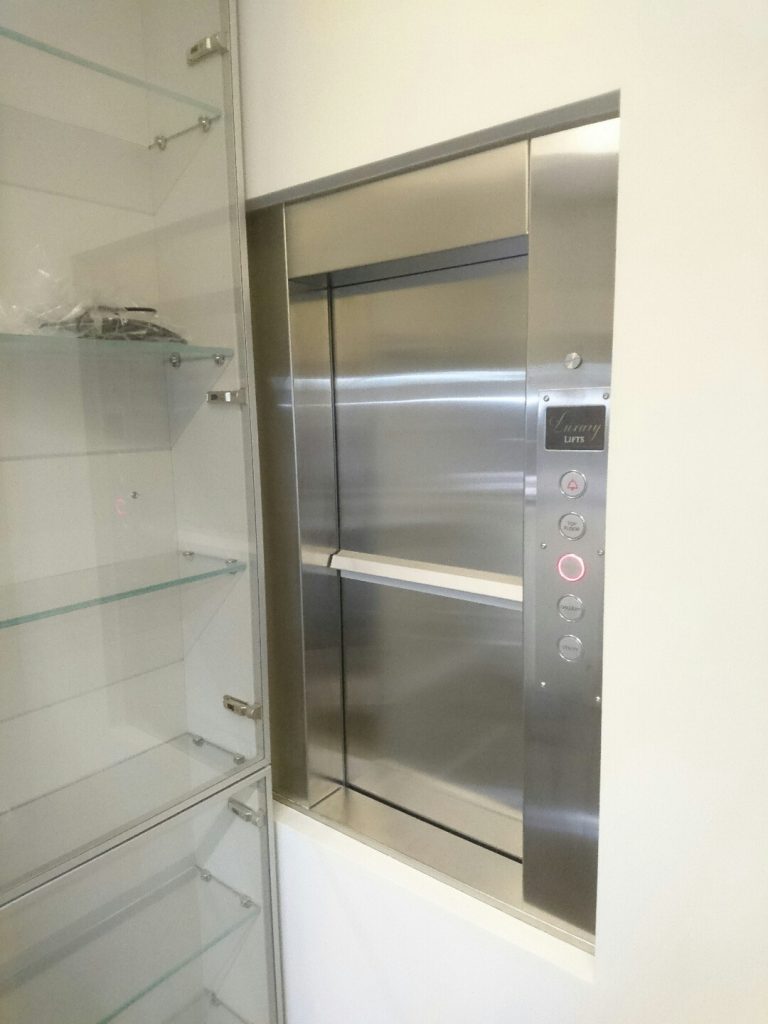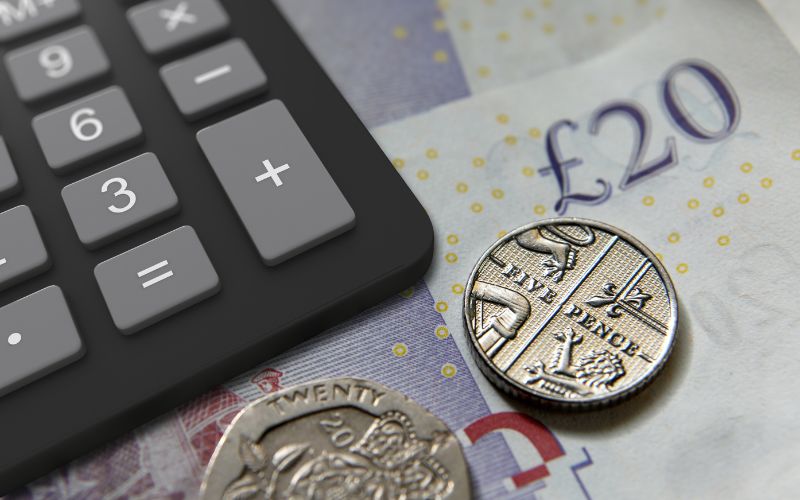Are you considering installing a dumbwaiter in your property but worried about the cost? Don’t fret! In this comprehensive guide, we’ll explore the best dumbwaiter finance options available to suit your budget and needs. From leasing to outright purchase, we’ll explain the pros and cons of each approach. We’ll also delve into the tax relief benefits you can take advantage of and how different lease terms can affect the total cost. By the end of this article, you’ll have a clear understanding of how to finance your dumbwaiter and make an informed decision.
Table of Contents
- 1 Dumbwaiter Finance Options: Tailored To Your Needs
- 2 Determining Your Dumbwaiter Cost: Factors to Consider
- 3 Installation and Running Costs: What to Expect
- 4 Get In Touch With Husbands Lifts to Discuss Your Finance Options
- 5 FAQ
- 5.1 What are the best dumbwaiter finance options available?
- 5.2 What are the advantages of leasing a dumbwaiter?
- 5.3 What are the benefits of outright purchasing a dumbwaiter?
- 5.4 How can I benefit from tax relief when financing a dumbwaiter?
- 5.5 How do lease terms affect the cost of financing a dumbwaiter?
- 5.6 How does the size and number of floors in a dumbwaiter affect the cost?
- 5.7 How does the weight capacity of a dumbwaiter affect the cost?
- 5.8 How do the choice of materials and special features in a dumbwaiter affect the cost?
Dumbwaiter Finance Options: Tailored To Your Needs
When it comes to financing your dumbwaiter, you have two primary options: leasing or outright purchase. Leasing allows you to pay a fixed monthly amount over a specified period, whereas outright purchase involves paying the full cost upfront. In this section, we’ll compare the advantages of each approach and help you determine which option is best for you. Leasing can provide greater flexibility and cash flow benefits, while outright purchase may offer long-term savings. We’ll explore these factors in detail and help you make an informed decision.
Leasing vs Outright Purchase
Leasing a dumbwaiter comes with its own set of advantages. By opting for a lease, you can enjoy lower upfront costs and the ability to spread the expense over time. This makes it an attractive option for businesses or properties that prefer to conserve capital and maintain stable cash flow. Leasing also provides flexibility, allowing you to upgrade to newer models or different sizes as your needs change. Additionally, leasing typically includes maintenance and servicing, alleviating the burden of extra expenses.
On the other hand, outright purchasing a dumbwaiter may offer long-term savings. By paying the full cost upfront, you avoid interest charges and the overall expense of leasing. Outright purchase may be beneficial if you plan to use the dumbwaiter for an extended period without the need for frequent upgrades. It provides a sense of ownership and control over the equipment, allowing you to tailor its maintenance and usage to your specific requirements.
Understanding Tax Relief Benefits
There are significant tax relief benefits associated with financing a dumbwaiter. By leasing or outright purchasing, you may be eligible for tax deductions and savings. The exact benefits depend on your location and specific tax regulations, but in general, both leasing and outright purchase can provide tax advantages.
Leasing often allows you to deduct the lease payments as an operating expense, reducing your taxable income. Additionally, leasing can provide tax benefits through the Capital Allowances Act, which allows you to claim allowances on the equipment you lease. This can result in substantial tax savings.
Outright purchase offers the advantage of depreciation. When you purchase a dumbwaiter, you can claim depreciation expense over the useful life of the equipment, reducing your taxable income. This can result in long-term tax benefits and savings.
How Lease Terms Affect Total Cost
The lease terms you choose can have a significant impact on the total cost of financing your dumbwaiter. Lease duration and payment structure are two key factors to consider.
A shorter lease term may result in higher monthly payments but lower overall expenses. With a shorter lease, you can pay off the equipment more quickly, reducing the total interest paid over time. However, it’s important to consider whether the higher monthly payments fit within your budget.
On the other hand, a longer lease term may offer lower monthly payments but higher overall costs. With a longer lease, you have more time to pay off the equipment, making the monthly payments more manageable. However, this can result in paying more interest over the term of the lease, increasing the total cost.
Consider your financial situation and long-term goals when choosing lease terms. If cash flow is a priority, a longer lease term with lower monthly payments may be favorable. If minimizing total cost and interest is your goal, a shorter lease term may be more suitable.

Determining Your Dumbwaiter Cost: Factors to Consider
When it comes to installing a dumbwaiter, it’s important to consider various factors that can influence the overall cost. By understanding these factors, you can make an informed decision and choose a dumbwaiter that meets your needs and budget. In this section, we’ll explore three key factors that impact the cost of a dumbwaiter: size and floor numbers, weight capacity, and material options and special features.
Size and Floor Numbers: Implications on Price
The size of the dumbwaiter cabin and the number of floors it serves can significantly affect the price. Larger dumbwaiters and those serving multiple floors require more materials and a more complex design, resulting in higher costs. It’s essential to assess your specific requirements and consider the size and number of floors you need the dumbwaiter to serve. By doing so, you can choose a size and floor capacity that fits your needs and budget without overspending.
Weight Capacity: Selecting the Right Model for Your Loads
The weight capacity of a dumbwaiter is another crucial factor to consider when determining the cost. Different models offer varying load capacities, and it’s important to select the right one for your specific needs. By accurately assessing the loads you’ll be transporting, you can choose a dumbwaiter with an appropriate weight capacity. This ensures optimal performance and prevents the need for costly upgrades or repairs in the future.
Material and Special Features: Stainless Steel and Heated Cabins
The choice of materials and special features in your dumbwaiter can also influence the cost. Stainless steel is a popular material option due to its durability and hygiene benefits. However, it may come at a higher price compared to other materials. Additionally, heated cabins can be a valuable feature, especially in settings like the food service industry. It’s essential to consider the cost implications of different materials and special features and determine which ones align with your needs and budget.
By carefully evaluating the size, floor numbers, weight capacity, materials, and special features of a dumbwaiter, you can make an informed decision and choose the right option for your needs and budget. It’s important to strike a balance between functionality and cost, ensuring that your investment in a dumbwaiter provides long-term value and convenience.
Installation and Running Costs: What to Expect
Apart from the initial purchase or lease cost, it’s essential to consider the installation and running costs of a dumbwaiter. In this section, we’ll provide insights into what you can expect in terms of installation expenses and ongoing maintenance costs. We’ll discuss factors that can influence these costs, such as the complexity of the installation and the type of maintenance required. Understanding the full financial picture will help you make an informed decision and budget accordingly.
Installing a dumbwaiter typically involves various expenses, including the labor cost for the installation team, any necessary modifications to the building or shaft, and the cost of sourcing and acquiring the required materials and components. The final installation cost can vary depending on the complexity of the project and the specific requirements of your property. It’s advisable to consult with a professional dumbwaiter installer to get an accurate estimate of the installation expenses.
Once the dumbwaiter is installed, there are ongoing running costs to consider. These costs mainly relate to the regular maintenance and servicing of the dumbwaiter, which ensure its safe and efficient operation. Maintenance expenses for dumbwaiters can include routine inspections, lubrication of moving parts, replacement of worn-out components, and any necessary repairs. The frequency and extent of maintenance will depend on factors such as the intensity of usage and the specific model of the dumbwaiter.
It’s crucial to establish a maintenance schedule and budget for these ongoing expenses to ensure the longevity and reliability of your dumbwaiter. Regular maintenance can help prevent breakdowns, extend the lifespan of the equipment, and minimize the risk of expensive repairs in the future.
Get In Touch With Husbands Lifts to Discuss Your Finance Options
If you’re ready to explore your dumbwaiter finance options and discuss your specific needs, Husbands Lifts is here to help. As the UK’s longest-standing dumbwaiter company, we have the expertise and experience to guide you through the process. Our team of experts will be more than happy to assist you in finding the best finance options that suit your budget and requirements. Don’t hesitate to reach out and take the next step towards installing a quality dumbwaiter.
FAQ
What are the best dumbwaiter finance options available?
When financing your dumbwaiter, you have two primary options: leasing or outright purchase. Leasing allows you to pay a fixed monthly amount over a specified period, while outright purchase involves paying the full cost upfront.
What are the advantages of leasing a dumbwaiter?
Leasing a dumbwaiter provides greater flexibility and cash flow benefits. You can pay a fixed monthly amount over a specified period without the need for a large upfront payment.
What are the benefits of outright purchasing a dumbwaiter?
Outright purchase of a dumbwaiter may offer long-term savings as you avoid paying interest on leasing fees. It also provides full ownership of the equipment from the start.
How can I benefit from tax relief when financing a dumbwaiter?
By leasing or outright purchasing a dumbwaiter, you may be eligible for tax deductions and savings. This can result in significant financial advantages for your business or property.
How do lease terms affect the cost of financing a dumbwaiter?
The duration of the lease and the payment structure can impact the overall cost of financing a dumbwaiter. Shorter lease terms may result in higher monthly payments but lower total expenses, while longer lease terms may offer lower monthly payments but higher overall costs.
How does the size and number of floors in a dumbwaiter affect the cost?
The size of the dumbwaiter cabin and the number of floors it serves can influence the price. Larger dumbwaiters and those serving multiple floors require more materials and complex design, resulting in higher costs.
How does the weight capacity of a dumbwaiter affect the cost?
The weight capacity of a dumbwaiter is an important consideration when determining the cost. Different models offer varying load capacities, and it’s essential to select the right one for your specific requirements to avoid overspending.
How do the choice of materials and special features in a dumbwaiter affect the cost?
The choice of materials, such as stainless steel, and special features, like heated cabins, can impact the cost of a dumbwaiter. Stainless steel is durable but can come at a higher price, while heated cabins are beneficial in certain industries but add to the overall cost.

